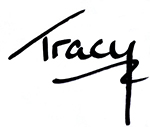
Writing to Market isn’t quite as divisive as Wide versus KU, but it comes close.
Mention Writing to Market to a group of indie authors, and you’ll witness a heated debate spring to life almost immediately. Sometimes full-blown arguments can break out.
For the record, I’ve never written to market. Not because I’ve ignored the indie gurus who insist it is the only way to get ahead as an indie author, but because I seem to be unable to write a book that follows the market expectations and delivers all the tropes. Even if I plan it that way, the book never ends up looking like other books in the sub-genre I was aiming for.
This could be a writing weakness or a strength, depending upon how you look at it. On the one hand, you could argue that as a professional writer, I should be able to write exactly what I determine should appear on the page and deliver the exact emotional journey to the reader that I planned.
On the other hand, one could justify my inability to stick to the pre-requisites as a sign that I’m letting the story unravel the way the characters and situations demand. I don’t write placeholder characters who move where I need them to move. They remain true to their natures, and utterly spoil my plans for where the story should go, and write their own fates.
And this very neatly encapsulates most of the arguments for and against writing to market. In favor of writing to market is the “it’s what a professional does” idea and against writing to market is “a story shouldn’t be manipulated into a pre-determined mold” idea.
What IS writing to market?
A quick definition if you’ve never heard this phrase before.
“Writing to market” involves finding a highly profitable fiction niche that isn’t saturated with books, but for which readers are eagerly buying. It’s usually a new niche.
Then you research the books that are in that niche, breaking them down into reader expections regarding tropes, settings, length, POV, obligatory scenes and where they appear in the story. You can get as detailed as how long each chapter should be, whether the chapters have titles and epigraphs, the naming conventions of characters and more.
You also need to understand what the emotional appeal of the niche market is, so that you can deliver that same experience to readers who are eager for more books just like the best sellers in the niche.
Then you write the book, ensuring that it holds all the salient features that you’ve determined are mandatory for the niche, and that they appear exactly where the reader will expect them to appear.
Ideally, you publish it, and readers snap up your book and push it to the top of the charts.
Amish romances started out as a hot niche. It’s now a mature market.
Mages in science fiction was a hot niche, once, too.
When Sarah J. Maass first released her fantasy romances, she created a niche of her own, which is now called “Romantacy” (a faintly derogatory term I’m resisting using.) Anyone who has written an academy fantasy romance featuring bullies that is just like a Sarah J. Maass book, is writing to market.
There is a danger that the market you’re aiming for is mature, saturated, and readers are sick of it. Or it might become a fading niche by the time you get your book written and published.
You have to watch trends and keep an eye out for new opportunities. Resources like K-Lytics are invaluable when you’re chasing trends.
But if you’re nimble, a fast writer, and have no problems directing your story in ways that might not be your natural voice or style, then you could very well thrive, writing to market.
Or…you would have.
The new reality
With the arrival of AI-written novels, writing to market has become a high-risk venture.
AI writing tools (there are dozens, including WriteSonic, Jasper, Sudowrite, Writer, and Ryter), are brilliant at writing to market, because that’s how they learn to write in the first place. They study all current novels, and reproduce a novel that is the same, but slightly different.
In other words, they’re writing to market. Precisely, and swiftly.
You can also choose to write to market, or continue to. But you’re competing with tools that can write much faster than you.
Plus, readers will be able to read all the AI-written novels they want. They will never run out of titles in their favourite niche. They will read books at a faster and faster pace. Whale readers will never have a reason to slow down their consumption, in the future. There will always be another book.
What’s an Indie to do?
If you can’t compete, writing to market, then you can go in the opposite direction.
Joanna Penn has said recently that to thrive in today’s indie publishing world, to stand out in an age of AI, one must be “more human”. Her five ways of standing out including writing truly unique books, which AI tools are incapable of doing (yet).
“If we can be even more human in our books, our words will resonate and readers will seek them out because they crave authentic experience.”
Joanna Penn
And David Bowie, long before the arrival of AI, was a strong proponent of finding your unique edge. He called creative endeavors that were the equivalent of writing to market as “playing to the gallery”:
You need to write books that are unique, pulling from your thoughts, feelings, concerns and issues.
How you do that is also unique to you…and is the heart of fiction writing.
It’s quite likely that you’re already doing this. The need to express themselves and capture emotions on the page is often what drives authors to write in the first place.
But doing it deliberately, by developing a thoughtful writing practice, you can ensure that you’re providing that authentic, unique and moving experience that will distinguish your books from AI books.
As a result, you will draw to you readers who appreciate your voice, and your style of story-telling, who like the experience you provide and will wait patiently for your next offering. They will become your True Fans and will buy everything you write.
If you’ve never before considered how you put yourself into your fiction writing, or how to draw from your inner self and put it upon the page, there are many books and resources that will help you do that.
Joanna Penn’s Writing the Shadow is just the latest. There’s also an older book by Writer’s Digest, simply called Voice, which will also help you develope an authentic style.
Any of Julie Cameron’s books for authors, including her classic The Artist’s Way, will help you develop your creativity and unique voice.
Daily Practice is the Key
You don’t have to make a special project of “improving your voice”.
Instead, aim to improve every aspect of your craft, from settings to plotting to point of view and on, and on. Every writing book that aims to improve your prose and your story telling will teach you at least one small thing that will make your writing unique and authentic…even if it teaches you what not to do.
And each time you settle down to write, put those lessons to use.

Write More, Faster Than Ever Before

I really enjoy your articles. Lots to think about.
Glad you found it useful, Sherile!
Thanks for stopping by!
Tracy
Pingback: Why UX Will be the Critical Factor for Indies in the Years Ahead – Stories Rule Press